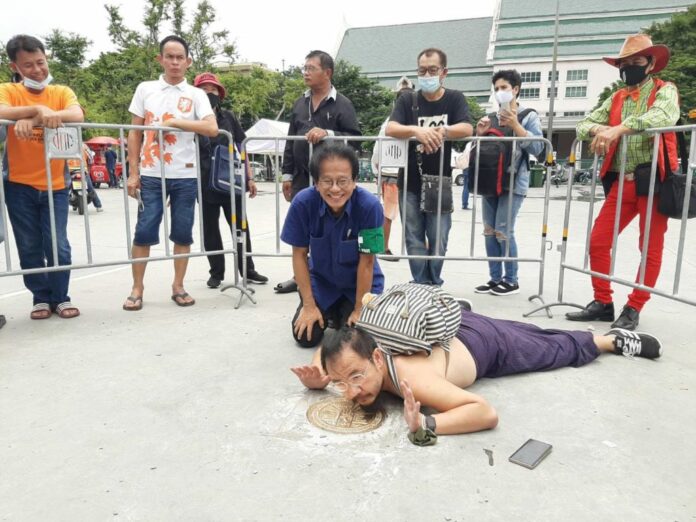
The introduction of a brass plaque symbolising a democracy movement last Sunday was a clear attempt by protest leaders to legitimize themselves by appropriating history.
Shortly after dawn last Sunday, Thammasat University student protest leaders embedded a brass plaque that reminds the public of the missing plaque which marked the June 24 revolt which ended absolute monarchy back in 1932.
It’s not just the similar material used, but even the inscribed text and the timing of the embedment were inspired by the original 1932 revolt plaque.
Calling it People’s Party 2020 plaque, the brass disk, now removed from Sanam Luang by police, was partly inscribed with the message: “At dawn of Sept. 20, here is where the people proclaim this country belongs to the people and not a property of the king as have fooled us.”
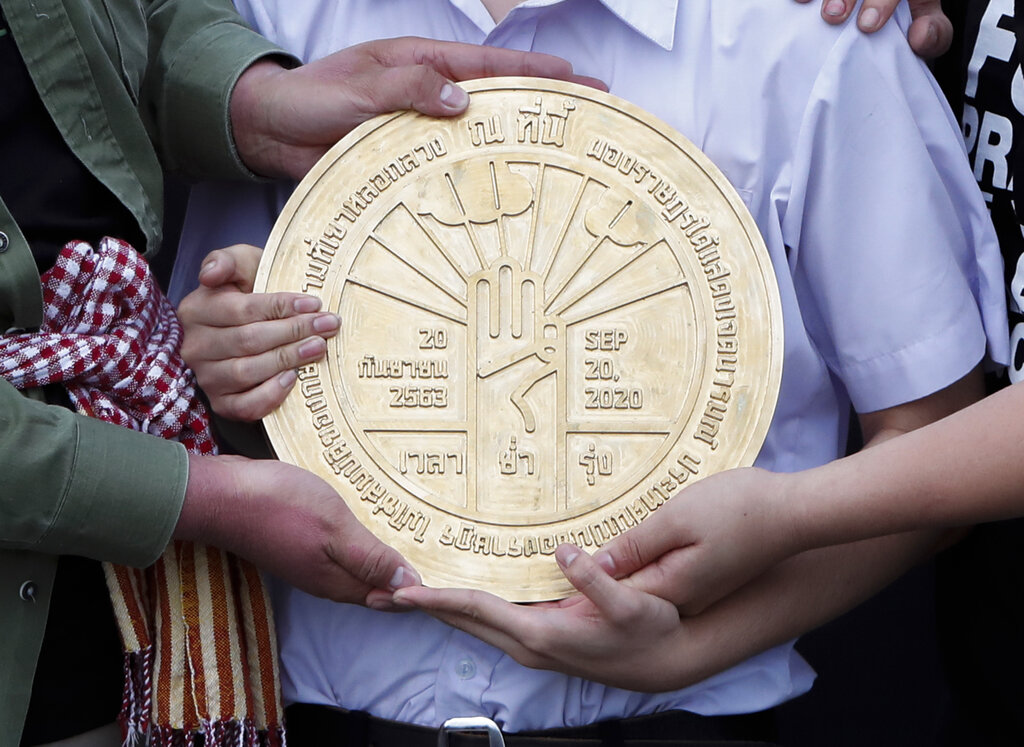
The text about the country belonging to the people was almost an exact copy from a line from the first declaration of the People’s Party announcing the end of absolute monarchy which stated: “this country belongs to the people and not the monarch as they have fooled us”.
The new plaque used the word “not a property” (mai chai sombut khorng) while the original used the word “not belonging to” (mai chai khorng).
The original 1932 plaque which was mysteriously removed from the Royal Plaza three years ago announced a revolt at dawn and inspired a similar timing from the protesters.
Please note that the Thammasat students-led protests declared themselves the People’s Party 2020, or People Party II, after the original People’s Party in 1932.
This is not a coincidence, many protest leaders have been inspired by the original revolt which ended absolute monarchy. Some cited an unfinished business that needs to be finished in this generation.
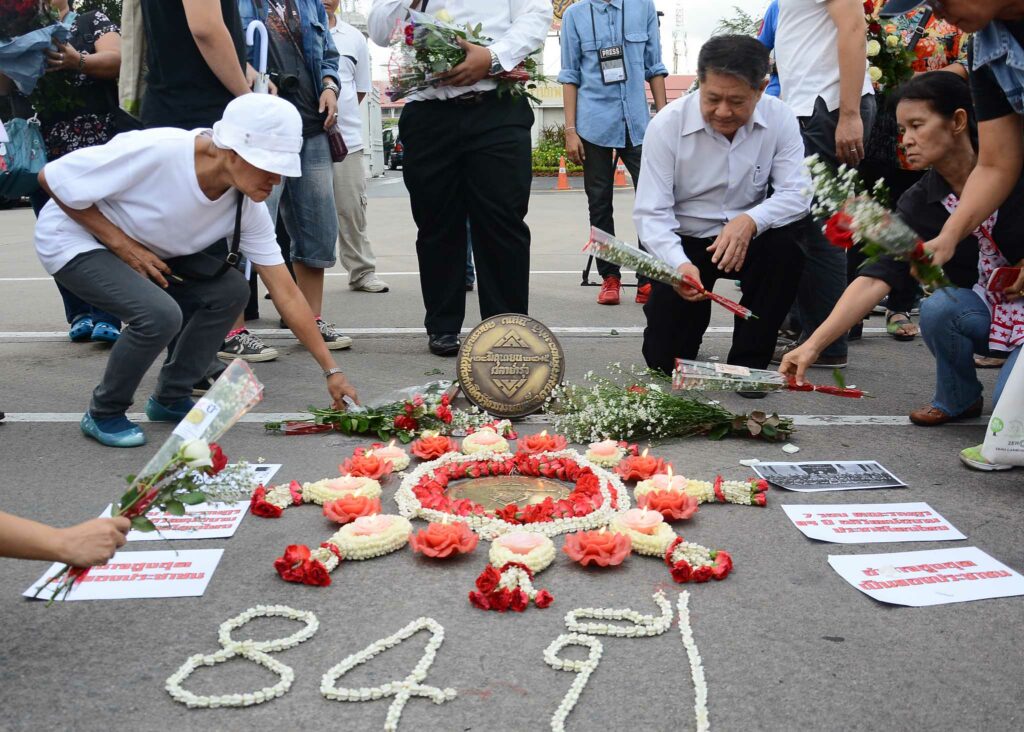
Some cited People’s Party co-leader leader Field Marshal Plaek Pibulsongkram saying the tensions as a result of the revolt persists and predicted that it would continue in his children and grandchildren’s generations.
So here we are, 88 years after the 1932 revolt which ended absolute monarchy, debating and struggling to find an acceptable social contract. How much power the monarchy should have? Protesters want monarchy reforms that includes government’s oversight, abolishment of the lese majeste law, an end to one-sided propagation of positive-only information about the monarchy in textbooks and state media and more.
It’s like the protest leaders have appointed themselves heir to the 1932 People’s Party who are their heroes to finish an unfinished task left behind by the original People’s Party.
The process of appropriating history for present struggles often includes omitting and editing out inconvenient, or even contradictory facts, however.
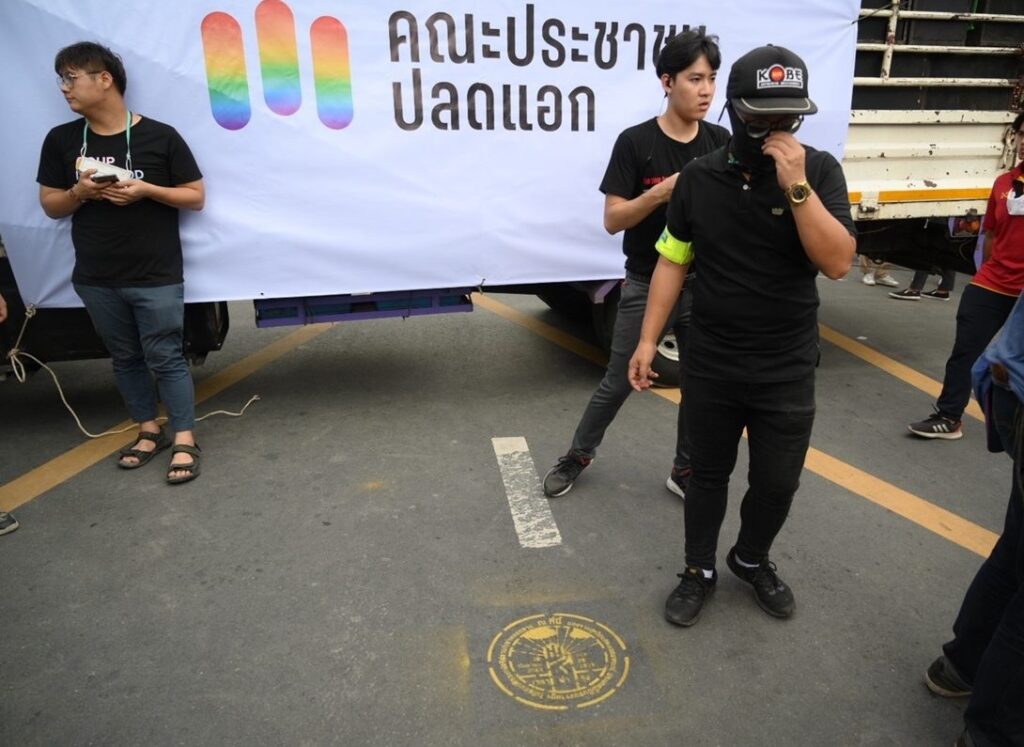
In this case, Field Marshal Plaek Pibulsongkram’s autocratic tendency in his latter years in power was often omitted. A pro-democracy movement in 2020 doesn’t want to remember or talk about the excess of Pibul when, during the height of his political power has succeeded in building a cult personality around him.
His slogan during World War II, “Believe in the leader and the country shall be out of danger” isn’t something a 2020 pro-democracy movement could be proud of.
So was the fact that Pibul nurtured the armed forces to have a prominent role in society that would eventually turn against him and ousted him in a military coup and continued to behave like a state within a state until today, nearly nine decades on.
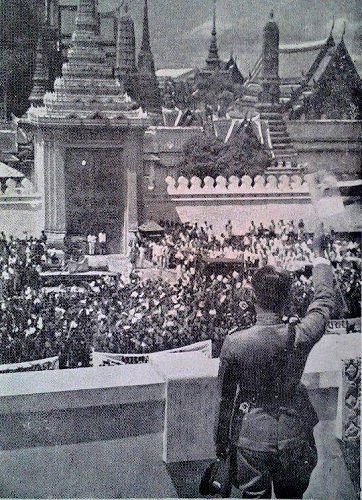
Scholar Kubkua Suwannathat-Pian, author of a biography of Pibul entitled “Thailand’s Durable Premier” – in which his name was spelled as Phibun by the author – stated that:
“Within the ‘grey version [of Pibul’s assessment], Thai hostorians and political scientists have come to accept that… Phibun’s rule which relied mainly on the military did obstruct and slow down the socio-political and economic development of the country along democratic principles.”
The late American historian David K. What, author of “Thailand: A Short History” meanwhile described Pibul as having shaped Thailand between 1938 to 1944 with his power and personality, “much as absolute kings had done a generation earlier”. Wyatt added that back then Pibul’s photograph “was everywhere, and his slogans were plastered on newspapers and billboards and repeated over the radio.”
More importantly, Wyatt pointed out that Pibul played an instrumental role in promoting compulsory military conscription that is a problem today and presided over “the first clearly political executions in Siam in more than a century” after he became prime minister in 1938 and 18 people charged with plotting against his regime end up facing the firing squad.
And let us not forget that the general who would become the worst military dictator in modern Thailand, Field Marshal Sarit Thanarat, was groomed by Pibul before Sarit eventually staging a coup against his boss in 1957.
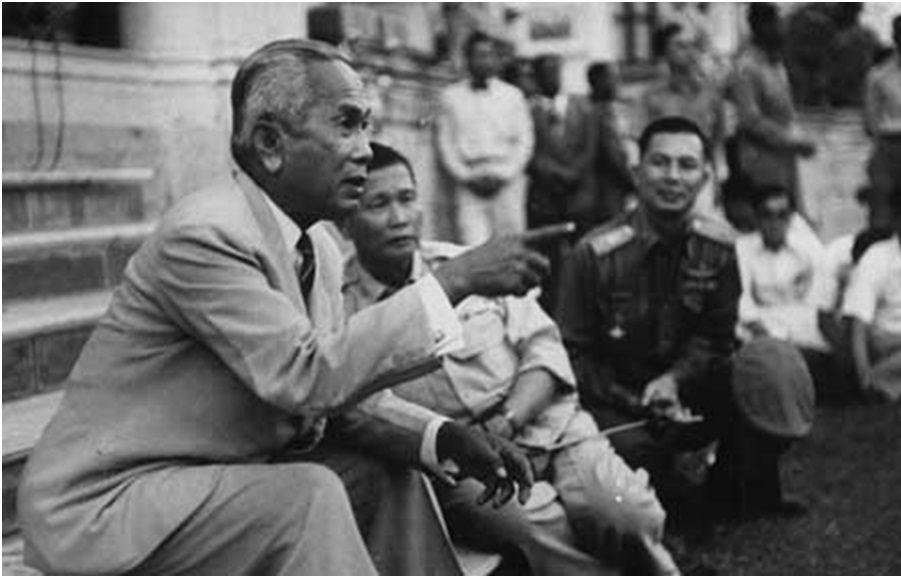
These uncomfortable historical facts must be omitted if not edited out. Facts often have a way of diluting black-and-white ideology.
On the other side of the current political conflicts we have the newly-formed ultra-royalist Thai Phakdee group led by Warong Dechgitvigrom. Thai Phakdee itself means “Loyal Thais”, a reference to their reverence to the monarchy.
On Friday, its Khon Kaen chapter held a demonstration to oppose any move to demand monarchy reforms and curb the powers of the king.
“We don’t mind if you want to chase the government out. We don’t care if you berate ministers. But we won’t put up with your insolence towards the institution,” its online demonstration poster read.
I have been at their inaugural assembly in Bangkok a month ago and I can say they have a different vision for Thai society from that of pro-democracy protesters when it comes to the monarchy.
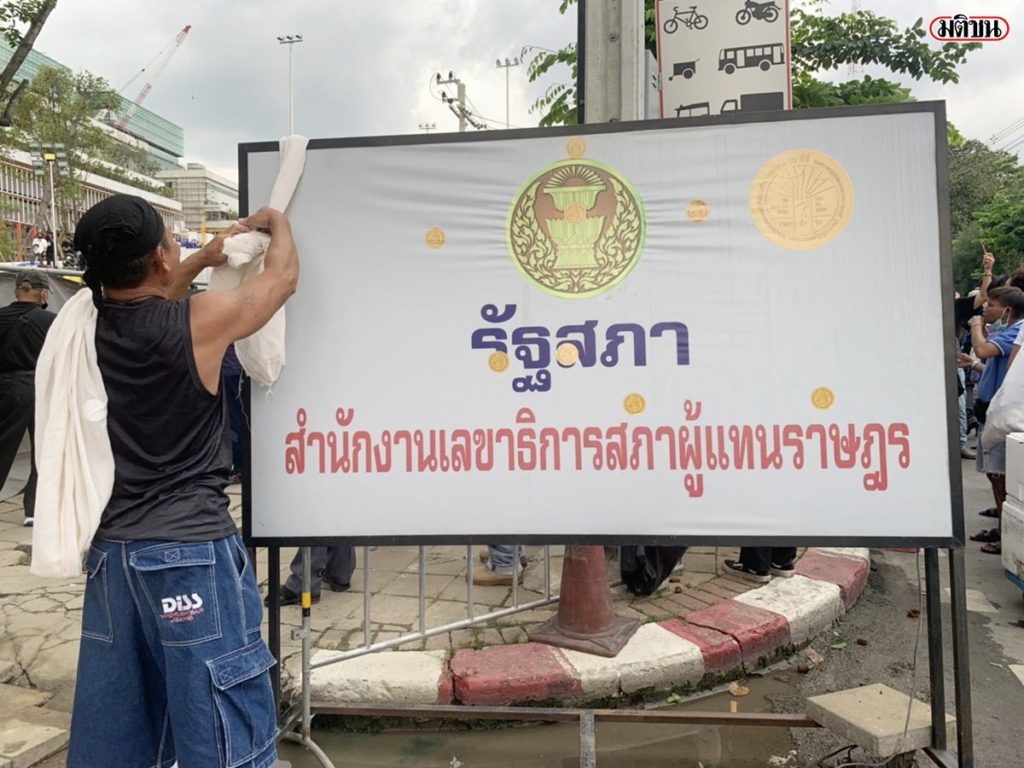
Royalists feel secure in the knowledge that there exists a father figure for Thailand at the pinnacle of social strata. Paternalism and faith in the monarchy, not necessarily an individual or a particular king, but the concept of having a unifying figure to unite and revere is something they insist on maintaining.
Thai Phakdee is now on a collision course with protesters demanding reforms of the monarchy institution.
Thai Phakdee feel themselves more Thai, and to them Thai identity is irrevocably tied to the monarchy, even more so than to Buddhism and the concept of nationhood. And they go back to histories, citing and praising prominent past monarchs for fighting and sacrificing themselves in order to guarantee the sovereignty of the kingdom of Thailand up to the present.
When they gathered last month, I listened to the group praising not just the current monarch, King Vajiralongkorn, but his late father, as well as King Taksin as well as King Naresuan, who fought against Burmese aggressors centuries ago, the latter in a elephant battle in 1593.
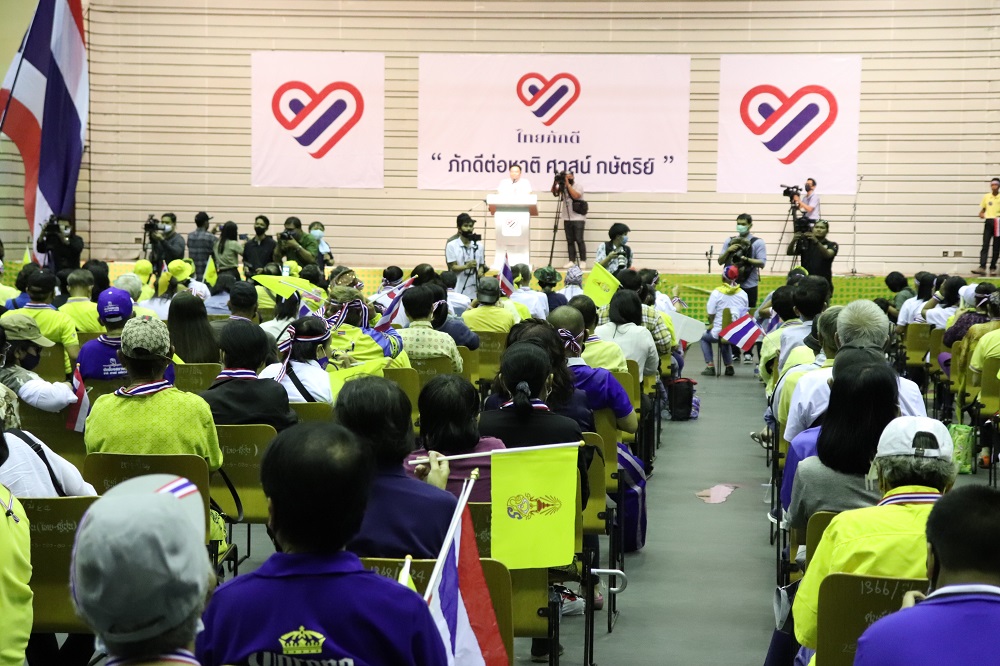
I did not hear anything about the deep inequality and arbitrary rule of absolute monarchs. It’s as if oppression and deep inequality wasn’t part of absolute monarchy. And as for the current supposedly constitutional monarch, there was no doubt nor any mention of any negative aspects as reported by the western press.
Monarchy is like a faith, a religion to ultra-royalists. It’s as if they want a God and since Buddhism has no god, monarchy as a religion suits them just fine. Monarchism is thus a surrogate religion to ultra-royalists.
And anything off message about the past or present kings must also be omitted, edited out if not denied.
Two pasts are now colliding in the present and having reflexivity would do well for both sides as the situation becomes more tense.












































